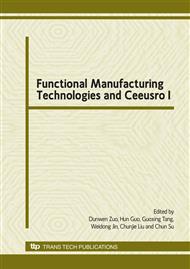p.454
p.458
p.463
p.468
p.472
p.477
p.481
p.485
p.490
Analysis and Research of Honeycomb Sandwich Structure for MicroSatellite Based on Equivalent Theory
Abstract:
With the honeycomb sandwich structure widely used in aerospace, the research of its mechanical properties becomes especially important. All of the finite element analysis software have no corresponding cell library, so before the analysis, the honeycomb sandwich panels should be equivalent processed. The paper by taking the floor of a microsatellite as the research object, used the equivalent plate theory and sandwich plate theory for equivalent processing, then adopted the finite element software to analyze the mechanical properties of the floor under two alternative condition. By compared with analytical solution, the equivalent results were reasonable, and the two methods were basically identical. Meanwhile, the equivalent results provided the reliable basis for the satellite structure optimum design and mechanical test.
Info:
Periodical:
Pages:
472-476
Citation:
Online since:
January 2010
Price:
Сopyright:
© 2010 Trans Tech Publications Ltd. All Rights Reserved
Share:
Citation:


